The War of 1812 is often viewed as the war that should have been avoided, and since it sits in between the American Revolution, Civil War, and, to a lesser extent, the Mexican-American War, it is often forgotten.
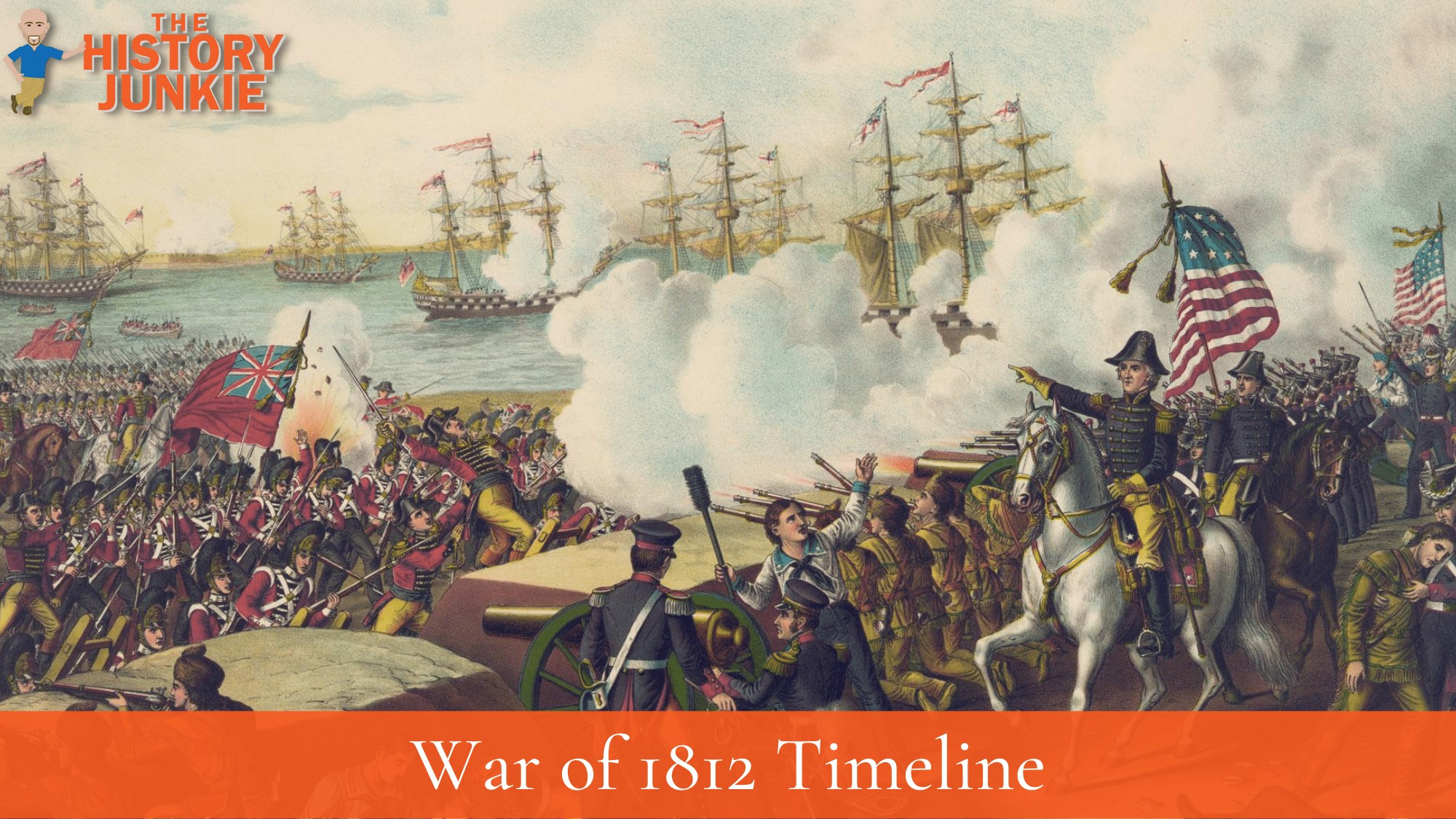
However, its significance should not be overlooked. While it certainly was not a productive war in terms of border expansion but did play a large role in organizing the United States Army for future military actions.
Jump to:
War of 1812 Timeline: 1797 - 1811
1797 - 1798:
The XYZ affair occurred during the Adams administration. It caused a quasi-war with France, which the Federalists use to begin building up the national military. Adams believed that if the United States wanted to stay out of European wars, it needed to build up a national military, specifically the Navy.
The Quasi-War ended when American Diplomat Elbridge Gerry was able to negotiate an end to the hostilities. During this time, the Adams administration took a middle ground.
Hamilton Federalists wanted to build up the military and fight France, while Thomas Jefferson wanted to avoid war and not build up the military. Adams opted for both. He began building the military but also did not want to get involved in European politics.
1803:
In 1803, Europe was engulfed in the Napoleonic wars. Britain began impressing American sailors to fight in the British navy. Jefferson did nothing to ease this problem. He had already begun dismantling the Navy, which left him very little to defend his sailors.
January 1807:
James Madison released a report about American sailors being impressed by the British Navy. The country begins to stir toward war.
June 1807:
The American ship Chesapeake is fired on by the British Navy, causing an international incident. The Warhawk movement in America began to strengthen.
Dec 1807:
Thomas Jefferson imposes an embargo in response to the impressment. His embargo devastates the American economy, particularly the states in New England.
March 1809:
James Madison is inaugurated as the 4th President of the United States of America. He inherits a foreign policy nightmare left behind by the Jefferson Administration.
November 7, 1811:
The Battle of Tippecanoe was fought in what is now Battle Ground, Indiana, between American forces led by Governor William Henry Harrison of the Indiana Territory and Native American warriors associated with the Shawnee leader Tecumseh.
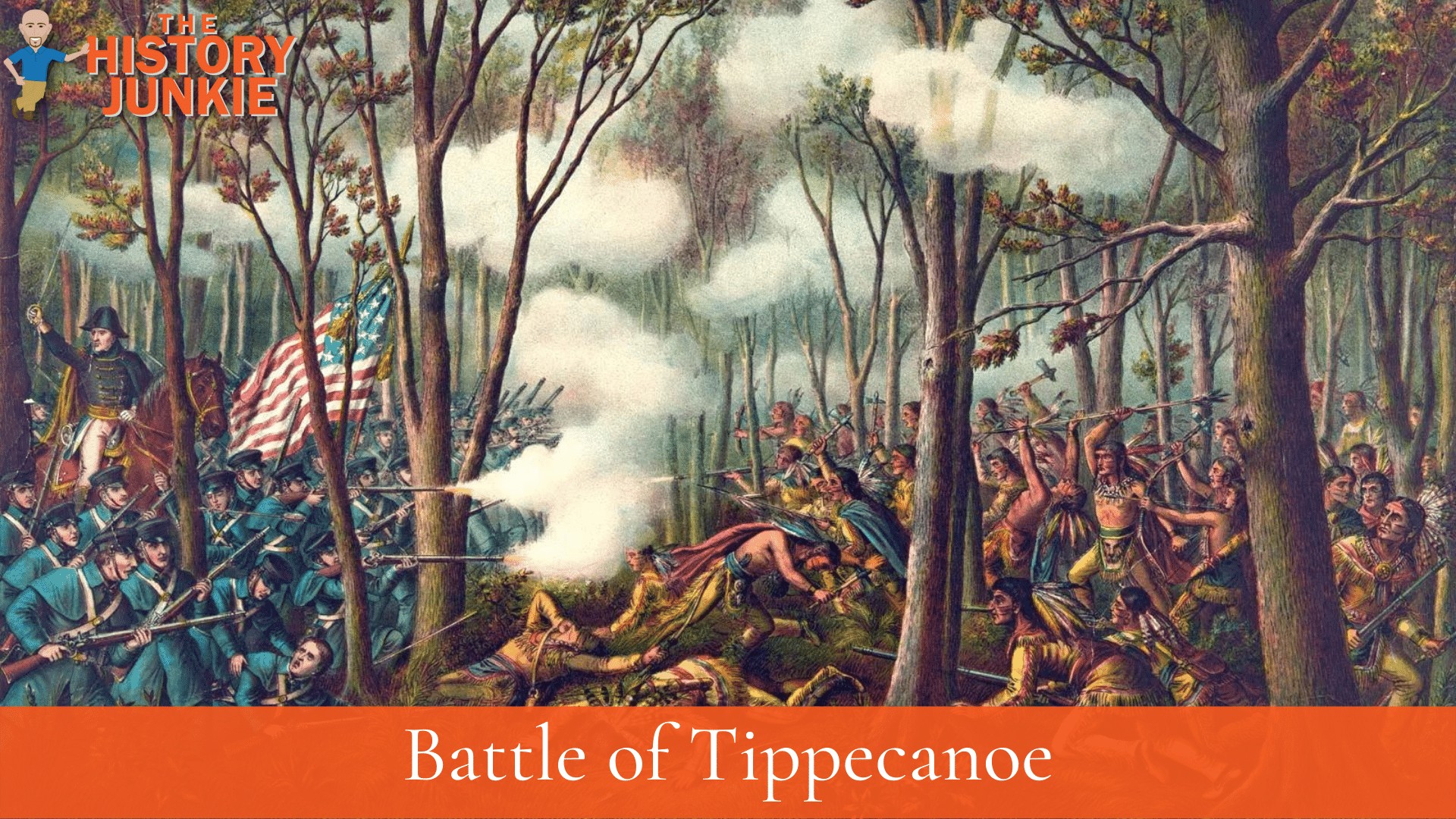
Tecumseh and his brother, commonly known as "The Prophet," were leaders of a confederacy of Native Americans from various tribes that opposed US expansion into Native territory.
As tensions and violence increased, Governor Harrison marched with an army of about 1,000 men to disperse the confederacy's headquarters at Prophetstown, near the confluence of the Tippecanoe and Wabash rivers.
William Henry Harrison repelled an Indian surprise attack and destroyed Prophetstown.
War of 1812 Timeline: 1812
June 1812:
America declares war on Great Britain. The British military was occupied by the Napoleonic wars and unable to dedicate their entire military might to the war.
June - August 1812:
Riots break out throughout Baltimore in protest of the war. However, popular opinion was in favor of military action against Great Britain.
July 1812:
The Americans under General William Hull were repelled in Canada, and the British forces launched a successful attack on Fort Michilimackinac.
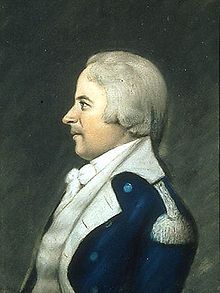
August 1812:
General William Hull surrendered Detroit to the British commander Isaac Brock. This caused much anxiety in the western portion of the United States at the time, especially in Northern Ohio and Indiana. Detroit was of much strategic value.
October 1812:
General Isaac Brock is killed at the Battle of Queenston Heights. The British managed to secure a victory at Queenston Heights but lost one of their more charismatic leaders in North America.
War of 1812 Timeline: 1813
January 1813:
British and Indian allies repel American troops at the Battle of Frenchtown. American survivors are killed the following day in the Raisin River Massacre.
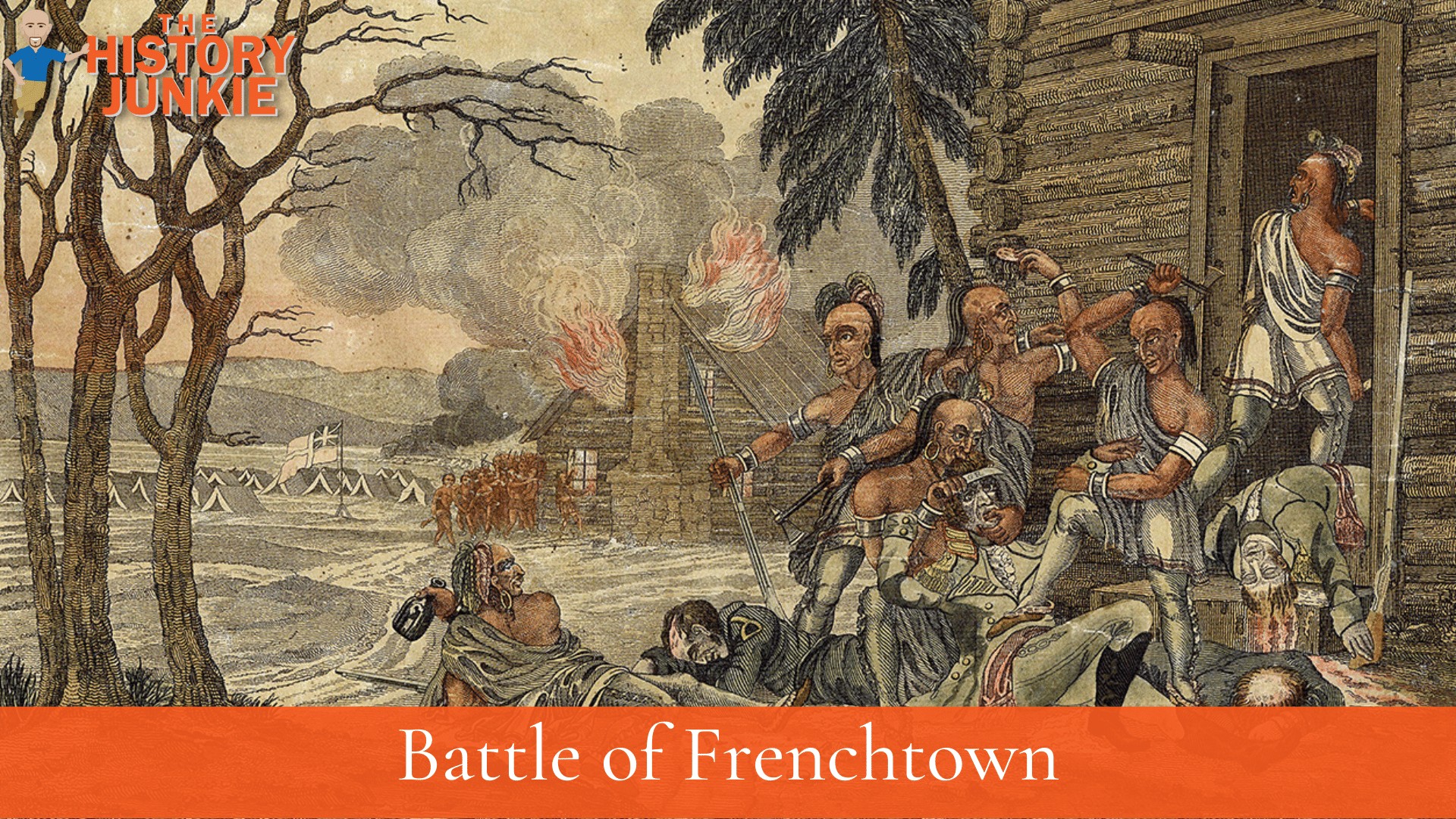
April 1813:
The United States capture and burn the city of York. Though the Americans won a clear victory, it did not have decisive strategic results as York was a less important objective in military terms than Kingston, where the British armed vessels on Lake Ontario were based.
May 1813:
The Siege of Fort Meigs took place in northwestern Ohio. A small British army with support from Indians attempted to capture the recently constructed fort to forestall an American offensive against Detroit, which the British had captured the previous year.
An American sortie and relief attempt failed with heavy casualties, but the British failed to capture the fort and were forced to raise the siege.
August 6, 1813:
That Battle of Fort Stephenson resulted in an American victory.
September 10, 1813:
During the Battle of Lake Erie, nine vessels of the United States Navy defeated and captured six vessels of the British Royal Navy.
This ensured American control of the lake for the rest of the war, which in turn allowed the Americans to recover Detroit and win the Battle of the Thames to break the Indian confederation of Tecumseh. It was one of the biggest naval battles of the War of 1812.
October 5, 1813:
That Battle of the Thames was a decisive American victory against Great Britain and its Indian allies in the Tecumseh Confederacy.
It took place in Upper Canada, near present-day Chatham, Ontario. The British lost control of western Ontario and were unable to provide the munitions needed by their Indian allies.
Tecumseh was killed, and his Confederacy largely fell apart, giving the Americans control of the region west of Lake Ontario.
November 1813:
During the Battle of Crysler's Farm, a British and Canadian force won a victory over a US force that greatly outnumbered them. The US defeat prompted them to abandon the St. Lawrence Campaign, their major strategic effort in the autumn of 1813.
War of 1812 Timeline: 1814
July 5, 1814:
The Battle of Chippawa was a victory for the United States Army in the War of 1812, during an invasion of the British Empire's colony of Upper Canada along the Niagara River on July 5, 1814.
July 25, 1814:
The Battle of Lundy's Lane was one of the bloodiest battles fought in the War of 1812 and the bloodiest fought in Canada. The result was indecisive and a tactical defeat for the Americans. The battle showed an improvement in the American military. They were able to hold their own in the field against British regulars.
August 1814:
Peace negotiations to end the war between the United States and Great Britain begin in Ghent.
August 24-25, 1814:
The British burned Washington, DC, after their victory at the Battle of Bladensburg. President James Madison flees the Capital, and Dolly Madison famously saves a picture of George Washington from the Burning White House.
September 6 - 11, 1814:
The Battle of Plattsburg on Lake Champlain is a major American victory, securing its northern border.
September 12 - 15, 1814:
The Battle of Baltimore was a sea/land battle where American forces repulsed sea and land invasions off the busy port city of Baltimore, Maryland, and killed the commander of the invading British forces.
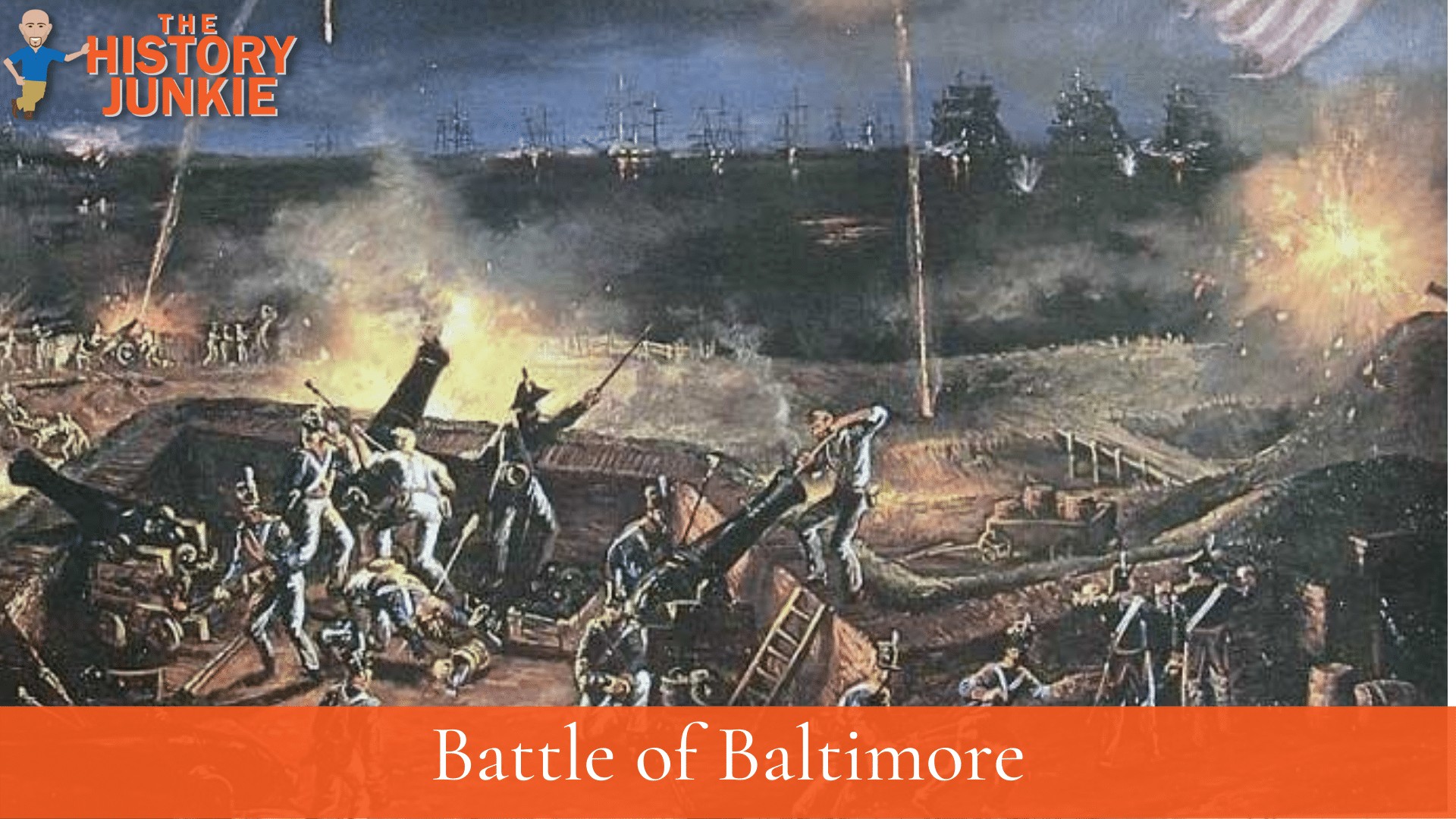
The British and Americans first met at North Point. Though the Americans retreated, the battle was a successful delaying action that inflicted heavy casualties on the British, halting their advance and consequently allowing the defenders at Baltimore to properly prepare for an attack.
December 1814:
Americans and British diplomats agree to the terms of a treaty and return to the status quo from before the war, and the Treaty of Ghent is agreed upon and only needs to be ratified.
War of 1812 Timeline: 1815
December 14, 1814 - January 18, 1815:
The Battle of New Orleans was the last major battle of the War of 1812. American commanded by Major General Andrew Jackson, prevented a much larger British force, commanded by Admiral Alexander Cochrane and General Edward Pakenham, from seizing New Orleans and the vast territory the United States had acquired with the Louisiana Purchase.
February 16, 1814:
The United States Congress ratified the Treaty of Ghent, officially ending the War of 1812.
Aftermath
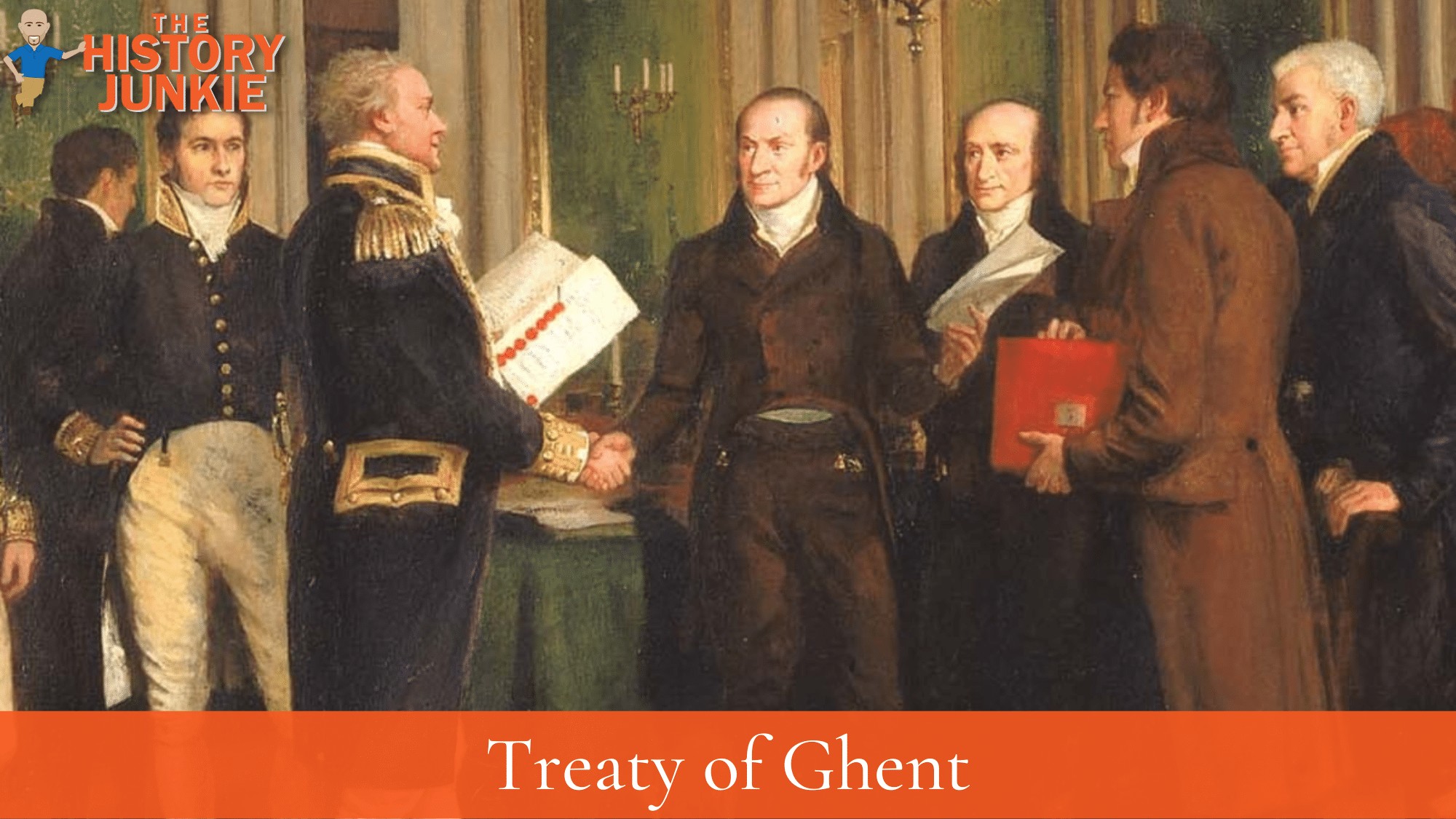
The Treaty of Ghent failed to secure official British acknowledgment of American maritime rights, and Britain had already stopped its policy of impressing seamen off American ships. In the century of peace among the naval powers from 1815 until World War I, American rights were not seriously violated.
The course of the war resolved and ended all of the original issues, especially since the Native Americans had been defeated and the Americans scored enough victories to satisfy honor and the sense of becoming fully independent from Britain.
Notably, the Americans won the final engagements against the British. The Americans also controlled more of the Great Lakes than the British throughout the duration of the war, possessing lakes Michigan and Erie.
The British controlled only Huron. Engagements for Ontario ended indecisively, with both sides maintaining a large presence on the lake but neither in full control. No actions took place on Superior.
On receiving news of the treaty, the British forces near New Orleans immediately departed.
News of the treaty finally reached the United States after the major American victory in the Battle of New Orleans; it won immediate wide approval from all sides.
The U.S. Senate unanimously approved the treaty on February 16, 1815, and President James Madison exchanged ratification papers with a British diplomat in Washington on February 17; the treaty was proclaimed on February 18.
Eight days later, on February 26, Napoleon escaped from Elba, starting the war in Europe again and forcing the British to concentrate on the threat he posed.
Impact on Native Americans
The War of 1812 adversely affected the Native American population, specifically the Northeast and Southeast tribes. Without Tecumseh's leadership, the tribes fell back into their old rivalries and failed to unite.
Andrew Jackson would emerge as an effective Indian fighter who had a no-mercy attitude. He would defeat the Creek and Seminole tribes in the following years, which would lead to the purchase of Florida and westward expansion into the southern states.
Native American resistance would be part of American History for the rest of the 19th century, and by the end of the 1800s, the West was almost tame, and the natives were relegated to reservations.
War of 1812 Resources:
National Society United States Daughters of 1812 - A Genealogical resource that tracks the descendants of those who fought in the War of 1812.
Star Spangled Banner Trail - An index of locations that can be visited by tourists seeking to learn more about the war by visiting the local towns.
